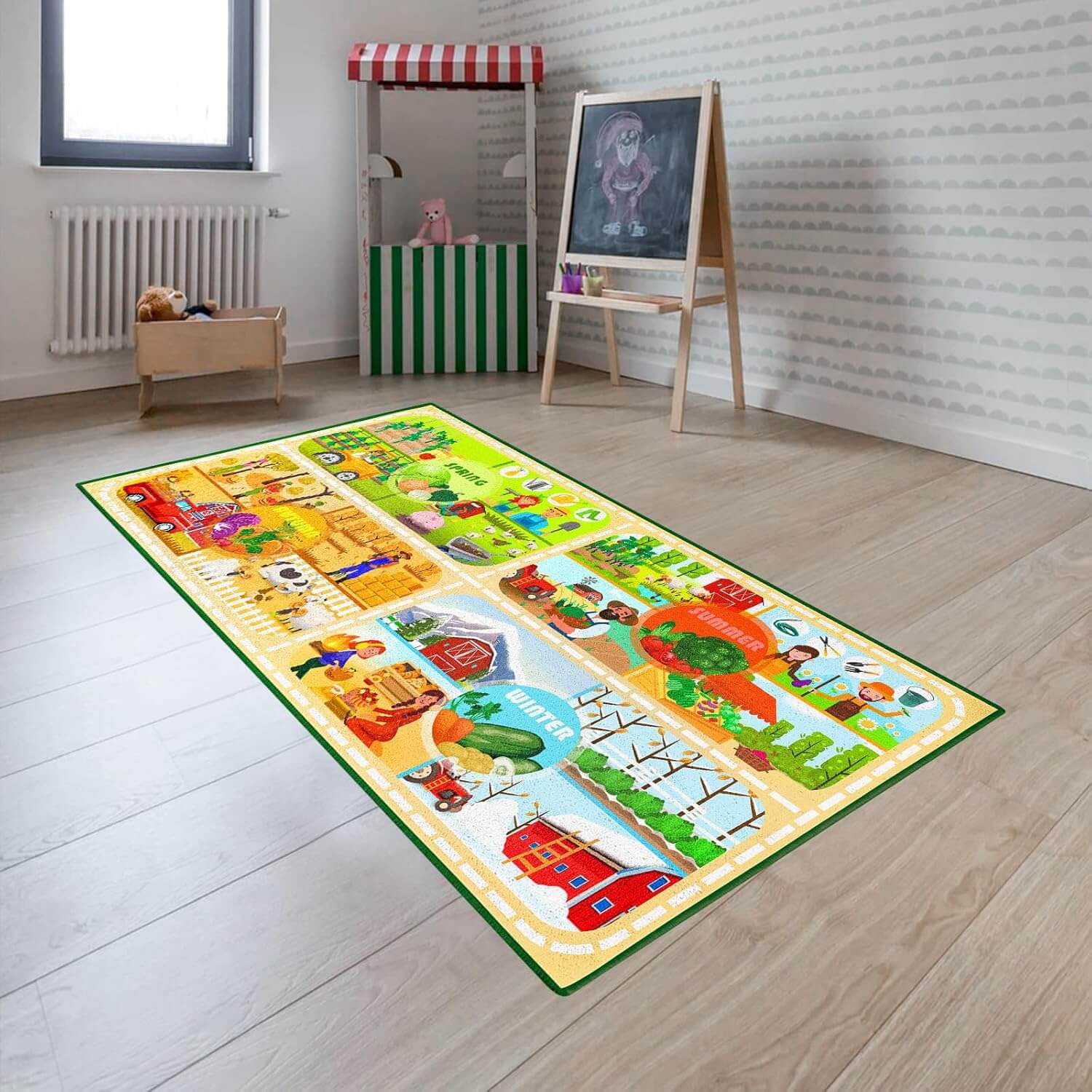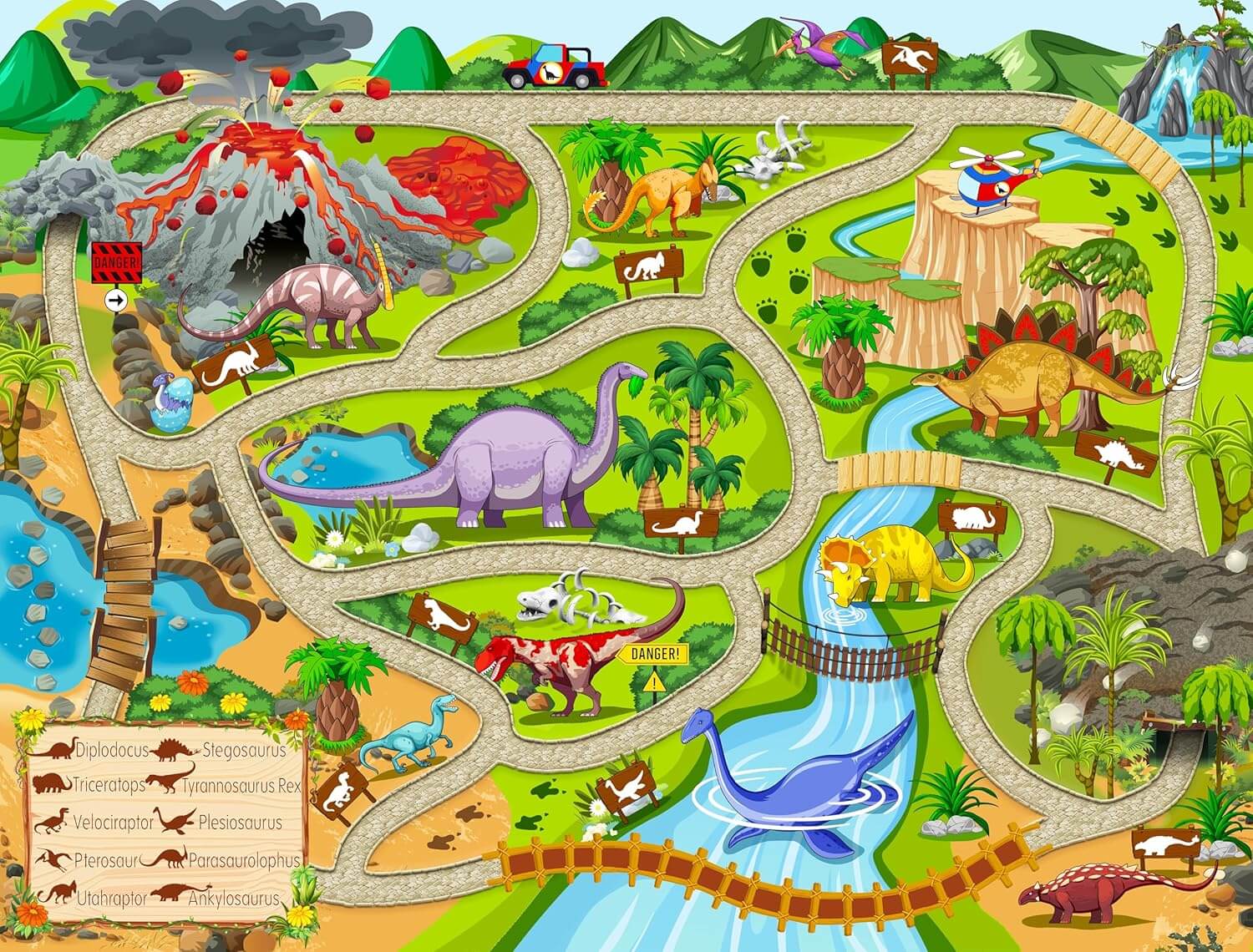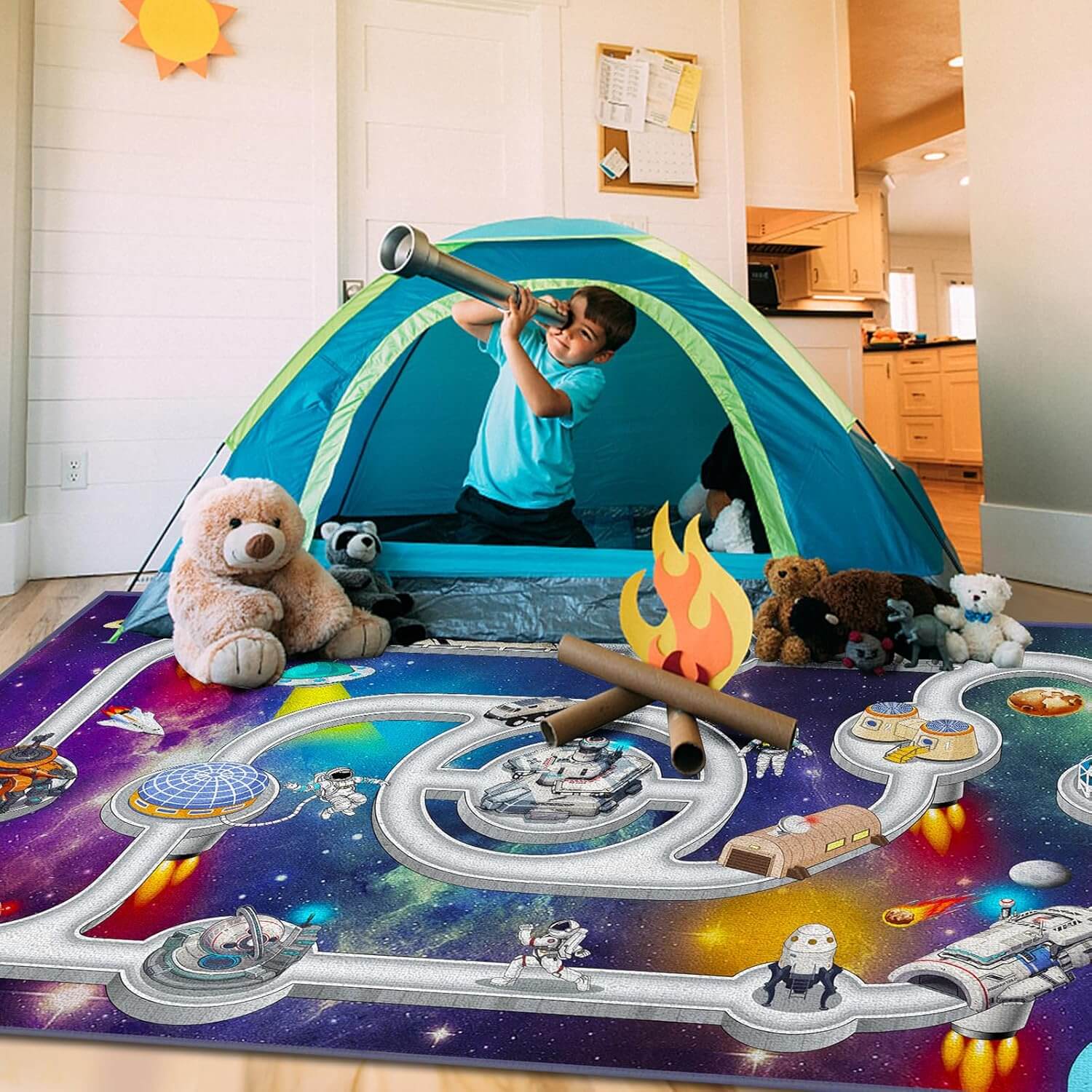Y'all ever noticed how some rooms just make you feel good the minute you walk in? There's some real science behind that feeling, especially when it comes to our classroom floors! With student stress levels higher than a cat's back at the vet, savvy teachers are turning to anxiety-reducing classroom rugs as part of their mental health toolkit.
The Youth Mental Health Connection
Let's get real for a hot minute—our kiddos are dealing with more stress than ever before. According to Child Mind Institute, anxiety affects a whopping 30% of children and teens, with many cases going undiagnosed. That's a whole heap of worried little minds trying their best to learn!
Environmental psychology (that's the fancy term for how spaces affect our feelings) shows that our surroundings can either amp up anxiety or help calm it down. As one Mississippi teacher put it, "When we switched to our blue geometric carpet with the soft wavy pattern, I could literally see my students' shoulders drop away from their ears during morning circle."
Color Psychology: Not Just Pretty Decoration
Those carpet colors aren't just about matching your classroom theme! According to research from the Association for Psychological Science, different hues affect our brains in measurable ways:
Blues and Greens: Nature's Chill Pills
Carpets in cool blue and green tones can:
- Lower heart rates (for real!)
- Reduce feelings of stress and agitation
- Improve focus and attention span
- Create an overall sense of calm and security
A Georgia kindergarten teacher shared, "My students call our seafoam green carpet 'the calm down island.' They naturally gravitate there when they're feeling overwhelmed."
Warm Neutrals: The Emotional Anchors
Beige, tan, and soft brown carpets:
- Create feelings of groundedness and stability
- Provide visual rest for overstimulated minds
- Support a sense of safety and predictability
- Work well in high-traffic, multi-use spaces
Lavender and Soft Purples: The Anxiety Fighters
These gentle hues:
- Reduce nervous system activity
- Support creative thinking
- Create a dreamy, peaceful atmosphere
- Work wonderfully in reading nooks and quiet corners
Patterns That Support Regulation
It ain't just about color, y'all! According to Wikipedia's entry on environmental psychology, certain patterns have predictable effects on our nervous systems:
The Winning Patterns:
- Gentle Waves: Mimicking water movement, these patterns activate the parasympathetic nervous system (that's the "rest and digest" mode)
- Soft Geometric Shapes: Provide visual organization without overwhelming sensory input
- Biophilic Designs: Nature-inspired patterns that reconnect children with calming natural elements
- Mandalas and Circles: Create focal points for mindfulness and attention training
Patterns to Avoid:
- High-contrast checkerboards (too visually stimulating)
- Busy, chaotic designs with no visual rest
- Overly complex patterns that create visual confusion
Trauma-Informed Carpet Selection
For our kiddos who've experienced trauma, environmental design matters even more. The National Child Traumatic Stress Network explains that trauma-sensitive spaces should provide:
- Predictability through consistent patterns
- Choice and control through defined spaces
- Sensory consideration through texture and color
- Safety signals through clear boundaries
One Louisiana school counselor noted, "We created calm corners in each classroom with specially selected carpets in cooling blues. These spaces have become essential self-regulation stations where students can reset after triggering events."
Carpet Zones for Emotional Regulation
Strategic placement of different carpet designs can create a full emotional regulation journey in your classroom:
- The Grounding Zone: Earth-toned carpet with subtle texture for students needing to feel safe
- The Focus Nook: Blue patterned carpet with geometric elements for concentrated work
- The Collaboration Island: Green circular carpet designs for positive social interactions
- The Calm-Down Corner: Lavender or blue carpet with gentle waves or circles for de-escalation
Practical Tips for Selecting Anxiety-Reducing Carpets
When shopping for your classroom, consider these anxiety-busting features:
- Texture Matters: Soft, touchable surfaces provide sensory comfort
- Pattern Scale: Larger patterns tend to be more calming than tiny, busy ones
- Color Saturation: Muted tones generally create less sensory activation than vibrant ones
- Defined Boundaries: Clear edges help create psychological safety
Our friends at Boooom Jackson offer a range of classroom carpets specifically designed with student mental health in mind.
The Joy of Emotional Regulation
There's something downright magical about watching a stressed-out child find their calm on the right carpet space. One Texas first-grade teacher shared, "We have a student who struggles with big emotions after recess. He's learned to take himself to our wave-patterned blue carpet corner, where he does three deep breaths while tracing the waves with his finger. It's simple but amazingly effective!"
When we create environments that support emotional regulation, we're doing more than decorating – we're providing essential mental health tools that children will carry with them throughout their lives.
What anxiety-reducing design elements have y'all incorporated into your learning spaces? We'd love to hear how they've made a difference for your students!




Leave a comment
This site is protected by hCaptcha and the hCaptcha Privacy Policy and Terms of Service apply.